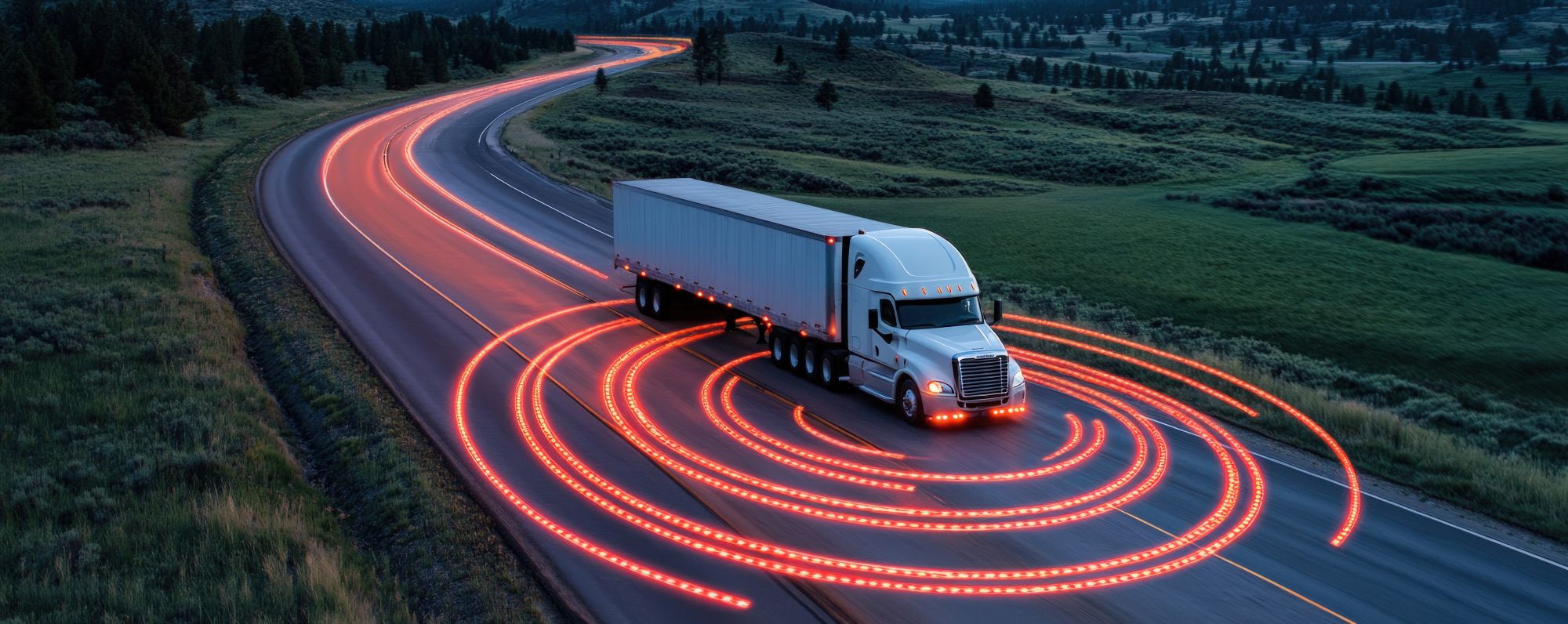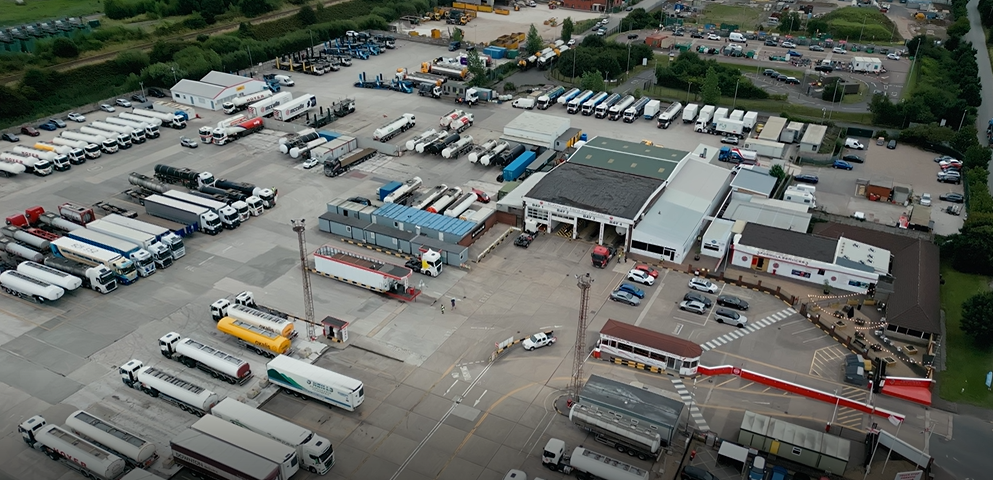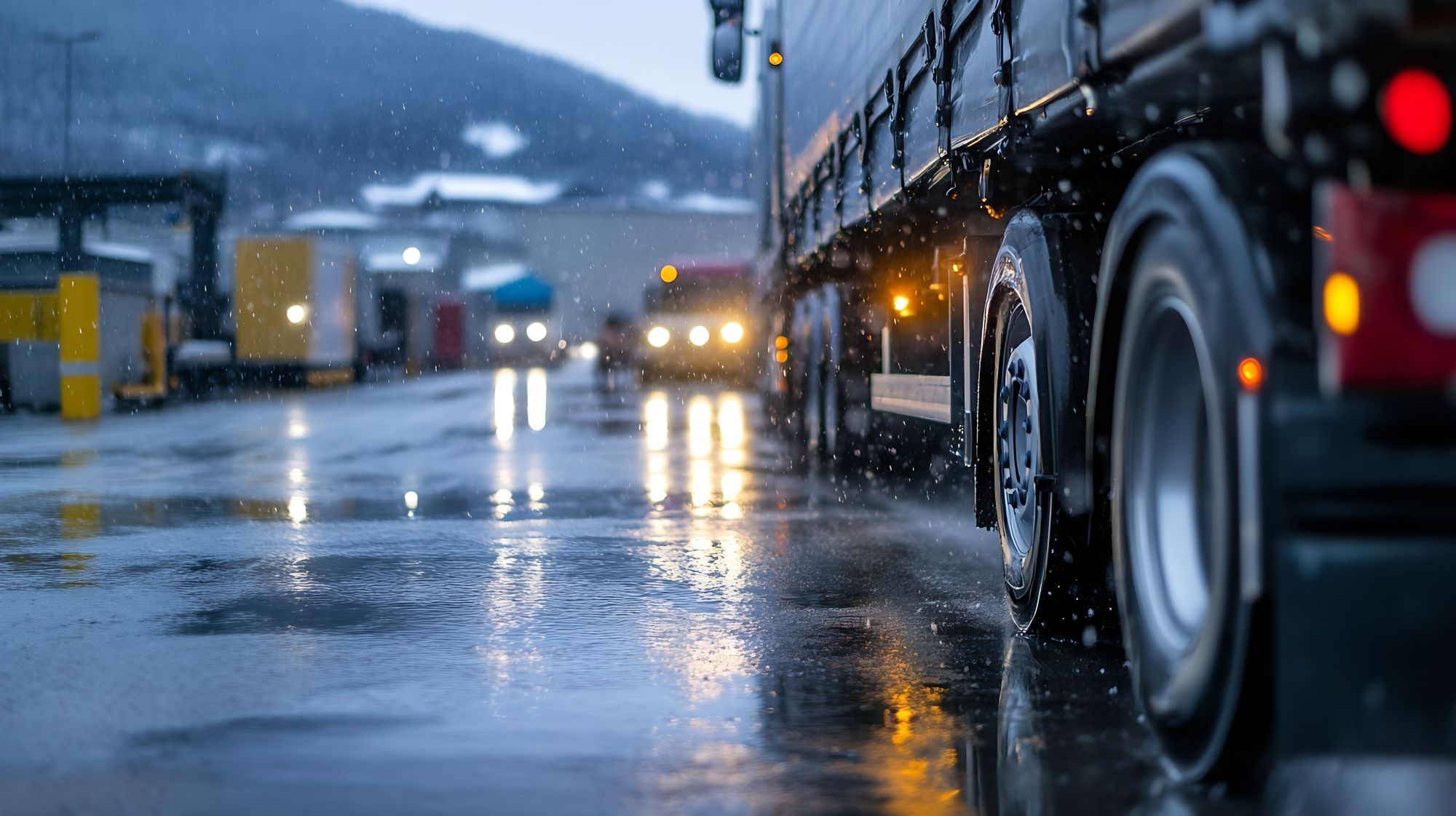
Susie Jones
Autonomiczne ciężarówki: Droga przed nami
Utworzony: 16.05.2025
•
Aktualizacja: 23.05.2025
Autonomiczne ciężarówki - dla niektórych zniechęcający pomysł, ale najwyraźniej przyszłość branży logistycznej. Wraz z postępem technologicznym w tym sektorze, perspektywa posiadania częściowo lub w pełni autonomicznych pojazdów dostarczających towary jest wysoka. Według brytyjskiego rządu może to nastąpić już w 2026 r., ponieważ w maju 2024 r. weszła w życie ustawa o pojazdach zautomatyzowanych (AV).
Co się jednak stanie, gdy autonomiczna ciężarówka ulegnie wypadkowi? Kto ponosi odpowiedzialność? Na tym blogu zagłębimy się w świat autonomii, w jaki sposób może ona wpłynąć na sektor mobilności, kto ponosi odpowiedzialność w razie wypadku i co kierowcy myślą o tej zmianie.
Jakie są różne poziomy automatyzacji?
Istnieje sześć poziomów automatyzacji jazdy:
Poziom 0 - Brak automatyzacji. Człowiek wykonuje wszystkie zadania związane z prowadzeniem pojazdu.
Poziom 1 - Wspomaganie kierowcy. Pojazd jest wyposażony w jeden zautomatyzowany system.
Poziom 2 - częściowa automatyzacja. Pojazd może sterować i przyspieszać. Jednak człowiek nadal monitoruje wszystkie zadania i może przejąć kontrolę przez cały czas.
Poziom 3 - warunkowa automatyzacja. Pojazd może wykonywać większość zadań związanych z prowadzeniem pojazdu. Nadal jednak wymagany jest nadzór człowieka.
Poziom 4 - Wysoka automatyzacja. Wymagane jest geofencing, a pojazd może wykonywać wszystkie zadania związane z prowadzeniem pojazdu w określonych okolicznościach. Opcjonalnie możliwy jest nadzór człowieka.
Poziom 5 - Pełna automatyzacja. Pojazd wykonuje wszystkie zadania związane z prowadzeniem pojazdu w każdych warunkach. Nie jest wymagana żadna ludzka uwaga ani interakcja.
Jak działają autonomiczne ciężarówki?
Czujniki, kamery i sztuczna inteligencja umożliwiają autonomicznym ciężarówkom samodzielną jazdę. Zaawansowane programy podejmują decyzje zamiast ludzkich kierowców.
Problemy, przed którymi może stanąć branża
Kwestie prawne - Kto ponosi odpowiedzialność w razie wypadku? Czy jest to kierowca, jego pracodawca czy firma serwisowa? Zagłębiamy się w tę kwestię poniżej.
Infrastruktura - nasze istniejące drogi zostały zbudowane z myślą o świecie silników benzynowych. Dlatego też infrastruktura musi zostać zmodernizowana lub wymieniona, aby wspierać floty pojazdów autonomicznych, co wymaga pieniędzy i znacznej ilości woli politycznej.
Zmiany społeczne - konieczna będzie również ewolucja postaw społecznych. Perspektywa pojazdów SI jest dla wielu zniechęcająca, z obawami dotyczącymi bezpieczeństwa, śledzenia podróży i prawnych szarych stref dotyczących wypadków drogowych.
Bezpieczeństwo - system oparty na sieciach cyfrowych staje się bardziej podatny na zagrożenia cybernetyczne.

Co kierowcy ciężarówek sądzą o autonomicznych pojazdach?
Bezpieczeństwo autonomicznych ciężarówek było gorącym tematem dyskusji w sektorze, a wielu z nich debatowało nad tym, czy technologia jest na niezawodnym poziomie, aby poradzić sobie z nieprzewidywalną pogodą i rozpoznać przeszkody - coś, co niepokoi kierowców ciężarówek na stronach mediów społecznościowych SNAP:
"Przy najmniejszym deszczu moja ciężarówka traci wszystkie funkcje automatyczne, AEBS i tempomat. Nie ma mowy, by w najbliższym czasie ciężarówki mogły jeździć samodzielnie bez kierowcy".
"To zabije więcej ludzi na drogach i spowoduje większe kolejki. Pomyśl tylko, jak niezawodna jest elektronika w twoim pojeździe Euro 6. Ci sami ludzie tworzą autonomiczne ciężarówki".
Kwestie prawne - kto ponosi odpowiedzialność w razie wypadku?
W razie wypadku odpowiedzialność może rozkładać się na kierowcę i producenta. Sąd musi ustalić, czy wypadek został spowodowany usterką techniczną, nieodpowiednią konserwacją czy błędem kierowcy.
Odpowiedzialność producenta
Producent ponosi odpowiedzialność w następujących przypadkach: - Wadliwe działanie czujnika
Usterki oprogramowania
Nieodpowiednie środki cyberbezpieczeństwa
Nieodpowiednie testowanie
Odpowiedzialność kierowcy / floty
Kierowca autonomicznej ciężarówki może być odpowiedzialny za wypadek, jeśli zaniedba niezbędny serwis lub konserwację wymaganą do prawidłowego działania pojazdu - można argumentować, że odpowiedzialność ta może spaść również na menedżerów flot.
Pomimo tego, nadal istnieje pewne zamieszanie wśród osób z sektora mobilności. Zapytaliśmy kierowców ciężarówek na naszych [stronach w mediach społecznościowych] (https://www.facebook.com/snapaccount?locale=en_GB), kto ich zdaniem ponosiłby odpowiedzialność w razie wypadku z pojazdem autonomicznym. 51% kierowców uznało, że to kierowca byłby odpowiedzialny, 37% zasugerowało producentów zautomatyzowanych ciężarówek, a 12% uznało, że twórcy oprogramowania.
Oczywiste jest, że zanim autonomiczne ciężarówki na stałe zagoszczą na naszych drogach, potrzebne jest więcej wyjaśnień wśród przedstawicieli branży.
Jak wygląda przyszłość?
W swojej odnowionej kampanii TruckPark of the Future SNAP przygląda się przyszłości sektora mobilności. Wraz z postępem technologicznym, autonomiczne pojazdy będą odgrywać znaczącą rolę w branży, z 50% szansą, że maszyny mogą przejąć wszystkie ludzkie miejsca pracy w ciągu najbliższych 120 lat.
Jak jednak poradzą sobie z jednymi z najbardziej niebezpiecznych autostrad w Europie?
Prowadzenie ciężarówki to coś więcej niż tylko siedzenie za kierownicą - to często nawigacja w ciągle zmieniających się i nieprzewidywalnych warunkach drogowych. Pojawia się pytanie, czy autonomiczne ciężarówki poradzą sobie na niektórych z najgorszych dróg w Europie. W ramach swojej najnowszej kampanii Hazardous Highways, SNAP zidentyfikował najbardziej niebezpieczne drogi w Europie, a wyniki pokazały, że Bułgaria, Litwa i Czechy są najbardziej niepokojące.
Można argumentować, że autonomiczne ciężarówki staną przed wyzwaniami, próbując poruszać się po niektórych z tych dróg bez interakcji z człowiekiem. Ograniczona dokładność GPS, zakłócenia czujników i brak spójnej infrastruktury mogą skomplikować sytuację.



